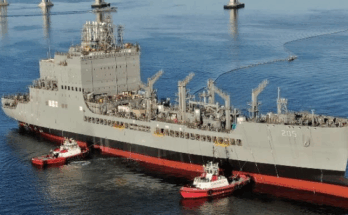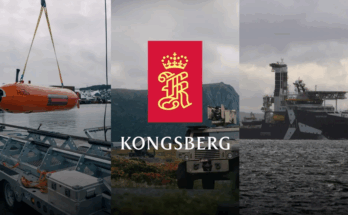The first of nine Boeing P-8A Poseidon maritime patrol aircraft (MPAs) intended for the Royal Air Force (RAF) arrived in Scotland on February 4. The arrival of this aircraft marks another step in the reconstitution of the RAF’s fixed-wing MPA capability, which was controversially abandoned for a decade under the Conservative-led government’s Strategic Defense and Security Review (SDSR) in 2010. During the interim, the U.K. relied upon the U.S., France, and Canada to plug a capabilities gap in the airborne reconnaissance and anti-submarine warfare (ASW) roles.
The first of the P-8As – which were procured during the Farnborough Air Show on July 11, 2016, at the cost of over £3 billion ($3.9 billion) – arrived at Kinloss Barracks in Scotland. Kinloss Barracks once served as the home to the previous MPA fleet in RAF service, the Nimrod MR2. This basing is temporary, as plans are in place to station the entire P-8A fleet at RAF Lossiemouth starting in October 2020. Until then, some £470 million worth of infrastructure and base modifications – including runway and taxiway resurfacing work, standing up training and simulation facilities, and building a new air traffic tower – is being undertaken.
#ICYMI The UK's first @P8A_PoseidonRAF aircraft has arrived on home soil for the first time today.
Find out more about this story and the role this aircraft will play in protecting the UK in the years ahead
lhttps://des.mod.uk/poseidon-makes-first-uk-landing#Defence pic.twitter.com/3KQ8paumzv— Defence Equipment & Support (@DefenceES) February 4, 2020
The RAF officially received its first P-8A Poseidon on October 30, 2019, but until now, this unit had been based at the U.S. naval air station in Jacksonville, Florida.
It was the cancellation of the successor project to the Nimrod MR2 – the BAE Systems Nimrod MRA4 – that began the RAF’s long stretch without a fixed-wing MPA capability. That project – launched in 1996 – continued to elude military planning goals, proving inordinately costly and consistently late. This resulted in a continuous shrinking of planned capacity.
The original contract covered a £1.6 billion deal between BAE Systems and the U.K. Ministry of Defense for production and delivery of 21 Nimrod MRA4s for maritime reconnaissance and attack.
By the time the project was scrapped altogether in 2010, estimates showed the MoD would end up paying more than £3.9 billion (and as much as £4.5 billion) for just the nine aircraft. Following the decision in the 2010 SDSR to kill the program, the nine MRA4s were chopped up by private contractors and sold for scrap in January 2011. The National Audit Office published a report on November 16, 2011, citing the total cost of the Nimrod MRA4 program to the MoD as £3.4 billion – all for zero return on investment.
Instead, the RAF scrambled to retain its maritime surveillance skills through the Seedcorn initiative, which placed around 30 ex-Nimrod aircrew with the United States Navy with the idea of providing a bridge for reconstituting the MPA role.
The British MoD unveiled a new SDSR in 2015. In the review, the MoD announced that a fixed-wing maritime patrol capability would be brought back via a P-8A Poseidon acquisition pursued through the U.S. government-to-government Foreign Military Sales (FMS) mechanism. The official British FMS request was approved by the U.S. State Department, with notification sent to Congress by the Pentagon’s Defense Security Cooperation Agency (DSCA) on March 24, 2016.
Once in full service at RAF Lossiemouth, the P-8A fleet will enable the RAF to conduct anti-submarine operations in the North Atlantic and protect the Royal Navy nuclear deterrent submarines entering and exiting their base at Faslane in Scotland.
The current schedule calls for all nine of the Poseidons to be delivered to the RAF by year-end 2021, with full operational capability at AF Lossiemouth to be reached in 2024.

Dan Darling is Forecast International’s director of military and defense markets. In this role, Dan oversees a team of analysts tasked with covering everything from budgeting to weapons systems to defense electronics and military aerospace. Additionally, for over 17 years Dan has, at various times, authored the International Military Markets reports for Europe, Eurasia, the Middle East and the Asia-Pacific region.
Dan's work has been cited in Defense News, Real Clear Defense, Asian Military Review, Al Jazeera, and Financial Express, among others, and he has also contributed commentary to The Diplomat, The National Interest and World Politics Review. He has been quoted in Arabian Business, the Financial Times, Flight International, The New York Times, Bloomberg and National Defense Magazine.
In addition, Dan has made guest appearances on the online radio show Midrats and on The Media Line, as well as The Red Line Podcast, plus media appearances on France 24 and World Is One News (WION).




